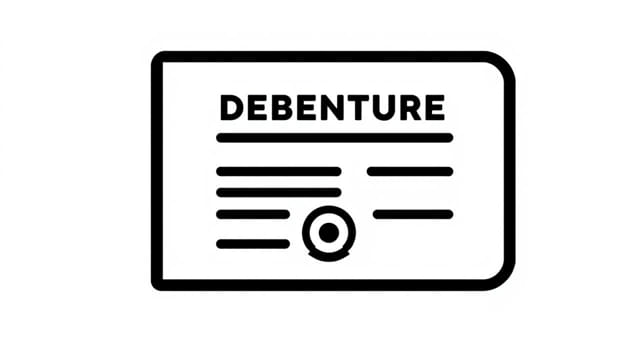In the realm of corporate finance, debentures are a vital tool used by companies to raise long-term capital. Investors who purchase debentures receive a formal document known as a debenture certificate. This certificate is an acknowledgment by the issuing company that it owes a specified amount of money to the debenture holder. It details the terms of repayment, interest rate, and other important conditions. Understanding the correct format of a debenture certificate is essential for compliance, clarity, and legal protection of both the issuer and the investor.
Understanding the Purpose of a Debenture Certificate
Why a Debenture Certificate is Important
A debenture certificate serves as a proof of debt owed by a company to an investor. It acts as a legal document and ensures that the terms of the debenture are clearly outlined. The certificate not only establishes the amount and terms of the loan but also provides investors with confidence and transparency about their investment.
Legal Framework Governing Debenture Certificates
Issuance of debenture certificates is governed by corporate laws and securities regulations applicable in the respective country. In India, for instance, the Companies Act, 2013 along with SEBI guidelines regulate the format and issuance of debentures. The rules usually specify the time frame within which the certificate must be issued after allotment and the essential components it must contain.
Key Elements of a Debenture Certificate Format
Basic Information
The format of a debenture certificate should include the following fundamental details:
- Certificate Number: A unique identification number for the certificate.
- Debenture Series: The specific series or type of debenture issued.
- Date of Issue: The date on which the debenture certificate is issued.
Company Details
The issuing company’s credentials must be clearly mentioned:
- Name of the Company: The full legal name of the company issuing the debenture.
- Registered Office Address: The official address of the company.
- Corporate Identification Number (CIN): (if applicable)
Debenture Holder Information
This section includes personal details of the investor:
- Name of Debenture Holder: Full name of the individual or entity holding the debenture.
- Address: Residential or registered business address of the holder.
- Folio or Client ID Number: If the debentures are held in dematerialized form.
Debenture Terms
The core section of the certificate covers the specific financial terms:
- Face Value of Debenture: The principal amount per debenture unit.
- Number of Debentures: Total units held by the investor.
- Total Value: Aggregate value of debentures issued to the holder.
- Rate of Interest: Annual interest rate payable on the debentures.
- Tenure: Duration of the debenture until maturity.
- Redemption Date: The date on which the debenture is repayable.
Security and Ranking
If the debenture is secured, the certificate must specify the nature of the security, such as assets pledged or charge created. It should also indicate whether the debenture is senior or subordinated in the order of repayment.
Payment Instructions
This section outlines the manner and frequency of interest payments:
- Payment Frequency: Monthly, quarterly, half-yearly, or annually.
- Payment Mode: Direct credit, cheque, or other specified method.
Sample Format of a Debenture Certificate
Illustrative Template
Below is a simplified example of a standard debenture certificate format:
Company Name: ABC Infrastructure Ltd. Registered Office: 123 Finance Street, Mumbai, India CIN: U12345MH2000PLC012345 DEBENTURE CERTIFICATE Certificate No.: DBC001245 ISIN: INE123456789 Series: 2025-A This is to certify that Mr. Rajiv Mehta residing at 45 Hill Road, Pune, is the registered holder of 100 (One Hundred) fully paid secured, redeemable, non-convertible debentures of ₹1,000 (Rupees One Thousand only) each bearing interest @ 9.5% per annum, aggregating to ₹1,00,000 (Rupees One Lakh only), issued on 1st January 2025, redeemable on 1st January 2030. The interest shall be paid annually on 1st January each year. The debentures are secured by a first charge on company's fixed assets as per the Trust Deed dated 15th December 2024. Issued under the authority of the Board of Directors. For ABC Infrastructure Ltd. Authorized Signatory Director Date of Issue: 01/01/2025 Place: Mumbai
Compliance and Timing
Issuance Deadline
According to many regulatory frameworks, companies are required to issue debenture certificates within six months of the allotment. Failure to comply can result in penalties and legal consequences for the company.
Registrar’s Role
Companies often appoint a Registrar and Transfer Agent (RTA) to manage the issuance and maintenance of debenture certificates. The RTA ensures accuracy, timely delivery, and secure record-keeping of debenture holders’ data.
Modern Practices: Dematerialized Debentures
Transition to Electronic Form
Many companies today issue debentures in dematerialized form, especially for public issues. In such cases, physical debenture certificates are not issued. Instead, details are electronically recorded with a depository such as NSDL or CDSL in India. However, for private placements or small investors, physical certificates may still be used.
Benefits of Demat Debentures
- Reduces risk of loss or theft
- Easy transfer and trading of securities
- Streamlined communication with the issuer
The format of a debenture certificate is not just a formality but a crucial financial and legal document that safeguards the interests of both the issuer and the investor. It serves as conclusive evidence of the investment, its terms, and the obligation undertaken by the company. By ensuring accuracy, completeness, and adherence to regulatory guidelines, companies can maintain investor confidence and fulfill their debt obligations transparently. Whether issued in physical form or digitally, a well-structured debenture certificate reflects a company’s commitment to professional financial practices and corporate governance.
1/2
